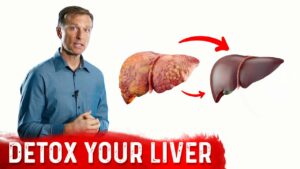In this video, the presenter discusses the development of memory, brain function, and blood supply. The story revolves around a girl who suffered a head injury but had no visible damage to her brain. Various tests were conducted, but nothing helped restore her vision. It was later discovered that the compression of the skull sutures was affecting her brain function. The presenter explains that the skull is not one solid bone but consists of different parts connected by sutures. He demonstrates exercises to help improve the condition of the skull bones and suggests that these exercises can aid in restoring brain function. The video ends with a reminder to engage in physical exercise and support the channel by subscribing and leaving comments.

Our Summaries are written by our own AI Infrastructure, to save you time on your Health Journey!
Key Insights:
- The skull is formed from two main parts: the facial skull and the cranial skull.
- The cranial skull contains the brain and is formed by several bones connected by sutures.
- Osteopaths and manual therapists debate whether the bones of the skull can move.
- Working on the seams of the skull can help with blood supply, lymphatic drainage, and overall brain function.
- The sternocleidomastoid muscle plays a significant role in shaping the form of the skull.
- Exercises to strengthen the sternocleidomastoid muscle include lifting and lowering the head and adding resistance with the hand.
- Anecdotal evidence suggests that skull suture compression can affect brain function and spontaneous healing can occur.
Transcript
Good evening dear friends! I’m glad to welcome you to our favorite TV YouTube Almanac, where we will be discussing memory development, brain function improvement, and blood supply. So let’s get comfortable in front of our YouTube receivers and prepare for an interesting session.
Now, let me start with an interesting story that took place in Moscow. The daughter of a prominent political figure had an accident where she hit the back of her head after a fall. Despite medical tests and examinations, nothing abnormal was found. However, she experienced vision loss and darkness in front of her eyes. Doctors worldwide couldn’t find a solution, and her condition remained dire.
The conclusion of this story will be revealed at the end of our discussion. But first, let’s talk about the structure of the skull. Many people don’t know that the skull is not one solid bone; it consists of two main parts: the facial skull and the cranial skull. The cranial skull contains the brain, while the facial skull holds the face, eyes, teeth, nose, and mouth. For our discussion, we will focus primarily on the cranial skull.
The cranial skull is formed from several bones, including the occipital bone, parietal bones, temporal bones, frontal bone, and sphenoid bone. These bones are interconnected with sutures, which are small structures visible on the skull. Some debates exist among specialists regarding the movement of these skull bones. Osteopaths claim that the bones of the skull can move, while others disagree. But for our purposes, we’ll focus on methods that work, regardless of these debates.
Moving on, the brain’s blood supply and overall condition depend on the neck’s condition, as the skull is located on the neck. Therefore, it’s essential to maintain the health of the neck and skull for optimal brain function.
During childhood, the skull can develop unevenly, and mild asymmetry is natural. However, excessive asymmetry or scoliosis can impact the skull’s shape and affect various functions related to the brain, hearing, and other structures. These conditions can also cause strain on the muscles and fascia in the neck.
To improve the condition of the skull and associated structures, specific exercises can be performed. One muscle of interest is the sternocleidomastoid muscle, responsible for various functions related to the skull, neck, and even the carotid artery. By targeting this muscle and working on specific skull seams, we can alleviate strain and improve overall function.
To exercise the sternocleidomastoid muscle, you can perform various movements such as lifting and lowering the head, rotating the head, and applying gentle pressure along the skull seams. By doing these exercises, we can promote blood flow, release tension, and eliminate adhesions that may impact skull structure and brain function.
Returning to the story mentioned earlier, the daughter who fell and experienced vision loss decided not to give up on life. She sought treatment in different places but to no avail. Ultimately, a strange twist of fate occurred when she accidentally hit her face, causing a compression and subsequent release of the skull sutures. Miraculously, her vision and other symptoms improved.
In conclusion, it is crucial to maintain the health of our skull, neck, and associated muscles for optimal brain function. By performing targeted exercises and addressing any asymmetry or strain, we can support our brain’s overall well-being. So, let’s stay active, engage in sports, support our parents, like and comment on videos, and don’t forget to subscribe to our channel for future broadcasts.





